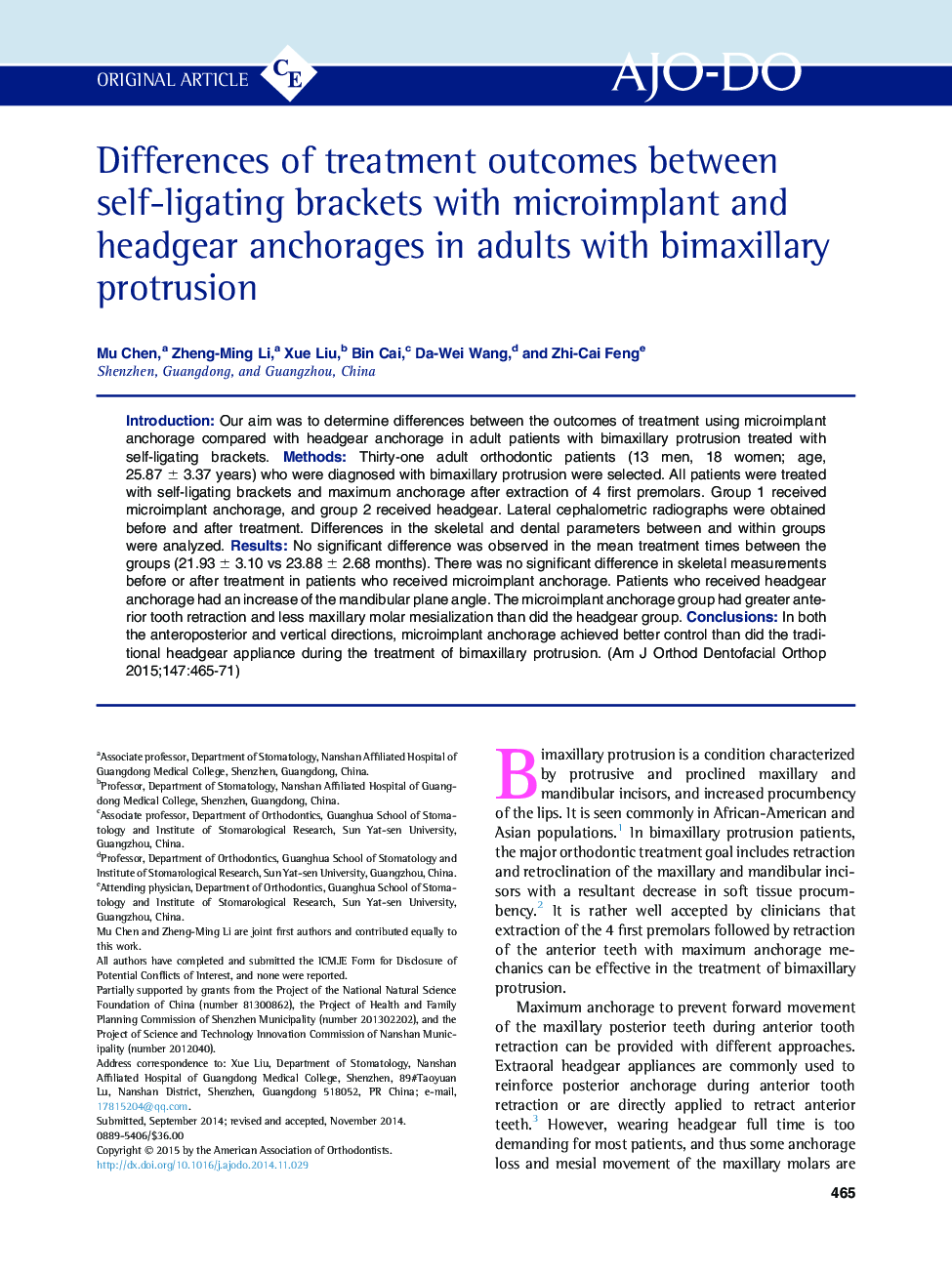| Article ID | Journal | Published Year | Pages | File Type |
|---|---|---|---|---|
| 3115641 | American Journal of Orthodontics and Dentofacial Orthopedics | 2015 | 7 Pages |
•Self-ligating brackets with implant anchorage might not shorten orthodontic treatment time.•Microimplant anchorage achieved better control in both the anteroposterior and vertical directions.•Microimplants may result in more retraction of the maxillary incisors.•Microimplants may result in less anchorage loss of the maxillary first molar.
IntroductionOur aim was to determine differences between the outcomes of treatment using microimplant anchorage compared with headgear anchorage in adult patients with bimaxillary protrusion treated with self-ligating brackets.MethodsThirty-one adult orthodontic patients (13 men, 18 women; age, 25.87 ± 3.37 years) who were diagnosed with bimaxillary protrusion were selected. All patients were treated with self-ligating brackets and maximum anchorage after extraction of 4 first premolars. Group 1 received microimplant anchorage, and group 2 received headgear. Lateral cephalometric radiographs were obtained before and after treatment. Differences in the skeletal and dental parameters between and within groups were analyzed.ResultsNo significant difference was observed in the mean treatment times between the groups (21.93 ± 3.10 vs 23.88 ± 2.68 months). There was no significant difference in skeletal measurements before or after treatment in patients who received microimplant anchorage. Patients who received headgear anchorage had an increase of the mandibular plane angle. The microimplant anchorage group had greater anterior tooth retraction and less maxillary molar mesialization than did the headgear group.ConclusionsIn both the anteroposterior and vertical directions, microimplant anchorage achieved better control than did the traditional headgear appliance during the treatment of bimaxillary protrusion.
